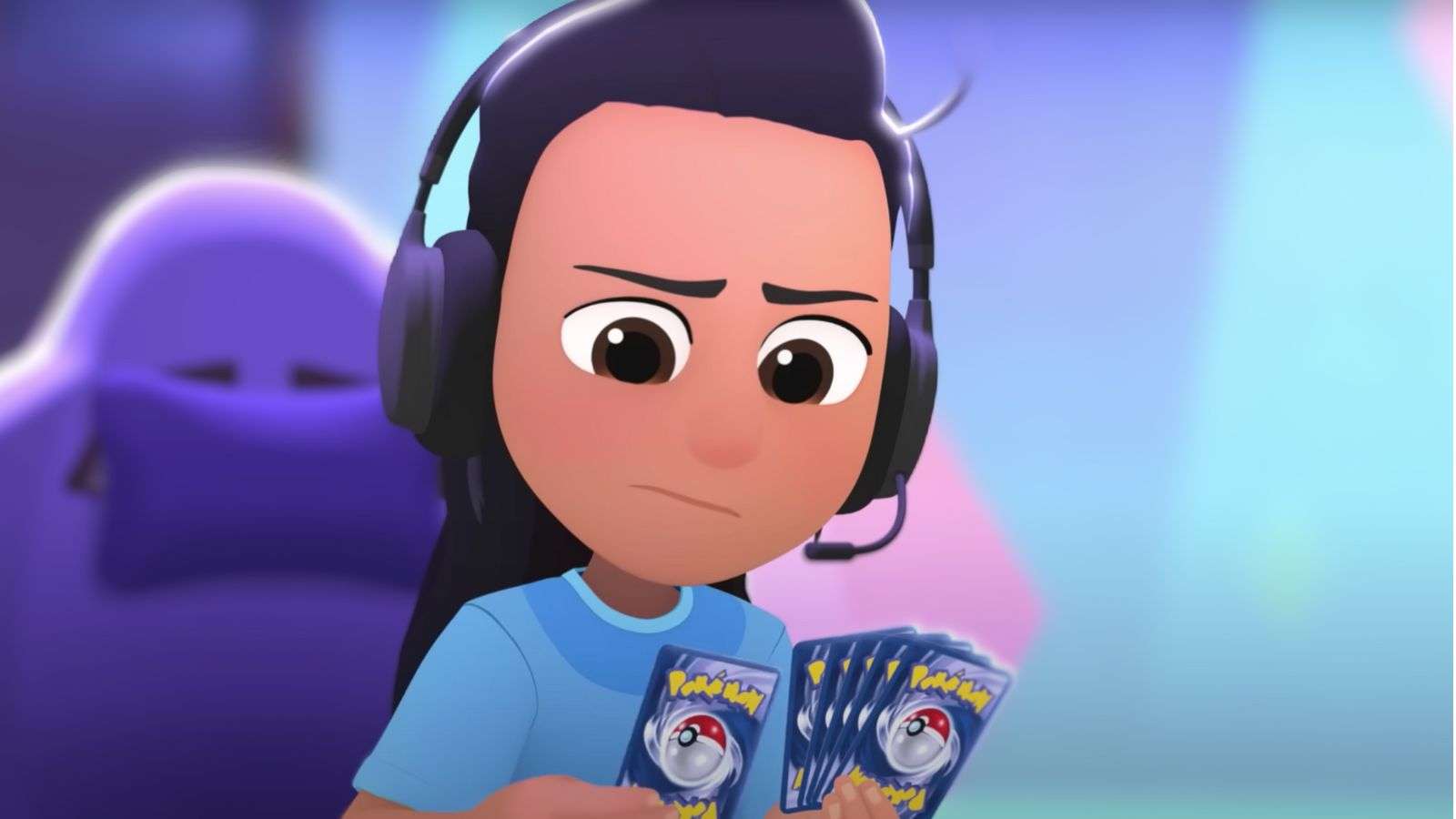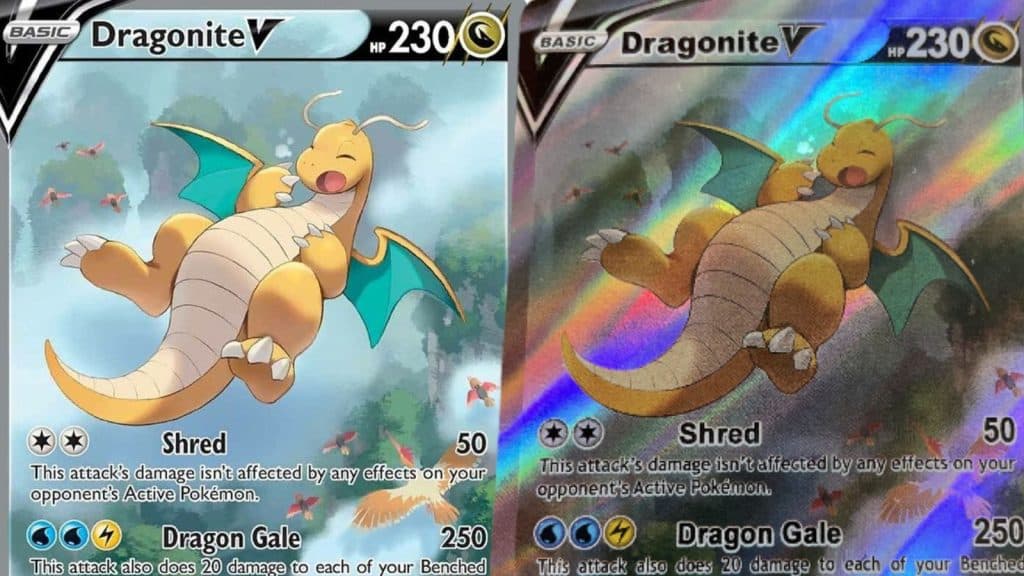Fake Pokemon TCG Cards: How to avoid getting scammed
 Pokemon Path to the Peak
Pokemon Path to the PeakFind out how to tell fake Pokemon cards and booster packs apart from the real cards without having to rip them in this Pokemon TCG guide.
Fake Pokemon cards are everywhere, including eBay and Amazon, and there are even schemes where ripped packs are resealed and valuable cards are replaced.
All in all, it can make investing in Pokemon cards worrisome for new collectors.
It’s important to follow your hunch on whether packs or cards are real or fake, especially if you have some experience in Pokemon TCG. So, enjoy this guide for an in-depth look into fake cards and how to avoid them.
Contents:
- How to avoid getting scammed with fake Pokemon Cards
- List of reputable Pokemon card sellers
- Pokemon Error, Erratum, or Misprint Pokemon cards
- Initial screening tests
- Pokemon cards under the microscope
- Easy to spot errors on fake Pokemon cards
- Rip testing Pokemon cards
- Quick, Easy to spot errors on fake Pokemon cards
How to avoid getting scammed with fake Pokemon cards:
Firstly, players should consider purchasing booster packets from reputable sources. Some of the best places to buy cards from are big chains that sell sealed products.
This means there is far less chance that the cards will be:
- Tampered with, which can mean weighing packs to deduce if it’s likely to have rare cards, or opening and resealing packs
- Swapped for fake cards
- Or for the cards to be fake in the first place.
List of Reputable Pokemon card sellers:
One of the best sellers of individual Pokemon cards is TCGplayer.com, which is generally well-trusted by card stores and users in the USA and around the world.
For other purchases, we recommend buying at the following trusted stores:
We also suggest always checking reviews and doing due diligence on sellers’ pages you find on Twitter, TikTok, and Instagram before you buy.
If you want to go the extra mile to ensure authenticity, you can also ask the seller to weigh the card, booster bundle, booster box, or pack they’re selling and timestamp that before sending it to you. You can then weigh it yourself at home.
Pokemon Error, Erratum, or Misprint Pokemon cards:
Misprinted cards can sometimes confuse newer players, as small mistakes like off-centering, lines, crimping, and unusual swirls or ink splatter from occasional misprints can make real cards look fake.
Some people collect misprinted cards. You can find many buyers and sellers of misprinted Pokemon cards who will tell you if the card is real or fake and might even make you an offer to buy it on this subreddit: r/PokemonMisprints.
Bulbapedia maintains a list of known erratum up until the Scarlet & Violet generation. For example, the Koraidon ex card is incorrectly attributed to 5ban Graphics instead of aky CG works
Initial screening tests for fake Pokemon cards:
Comparison test:
You can carry around a real Pokemon card in your wallet. This way, you can visually compare the text, numbering, edges, texture, and layout of the art on a Pokemon card.
This isn’t a surefire way of knowing, as cards can vary between sets, so it’s also worth looking up the card on TCGplayer.com or the official Pokemon TCG online card database and verifying against an image of the card.
To do this, look up an image of the real Pokemon card using the numbering in the bottom left or right corner. If it doesn’t come up, the chances are it isn’t real. If it does, compare the card image to your potential buy.
 Pokemon
PokemonWeighing:
Weigh your cards with jeweler scales, like this portable digital scale from Amazon.
- Standard weights are between 1.67 g and 1.76 g for older cards
- For older packs of cards, ‘heavy packs’ come up once in a while, and tend to include more rare hits than lighter ones. People who tamper with boxes and reseal them will remove all the heavy packs
- In the new Paradox Rift set cards can go up to 2.55 g per pack of cards +
- Pokemon started to include TCG code cards in sets, which are of variable weights that ‘throw off’ the scales, making it very difficult to deduce if you would pull some heavier rare cards in every pack.
Torch test:
Shine a light through the card. Often, fake cards lack a black layer between the cardboard and let through far more light. Also, odd patterns are visible under the light that can be compared to an authentic card.
Take your card to a shop:
If you’ve already bought your card and are unsure, it’s worth taking it to a trading card shop or a store where they sell Pokemon cards. The staff may take a look and help you to decide, and they may even have a copy of the real version of the card.
Post your card on Reddit:
IsMyPokemonCardFake is one of many communities where collectors, buyers, and prospective buyers can post images of Pokemon cards. You can usually receive quick guidance on whether or not a card is fake or not.
If you’d like to learn how to figure it out for yourself, then take a look below for tips on determining if your Pokemon card is real or fake.
Pokemon cards under the microscope:
- Texture
- Originals will have a smooth finish and a glossy texture
- Fakes may have rougher textures or odd textures with grids and shiny backgrounds
- Text and font
- Originals have consistent type font and spacing, with sharp and clear letters
- Fakes could have odd spacing between letters and may have inconsistent fonts
- Holo Foiling
- Original cards have a holofoil stamp in the bottom right corner
- Fake cards may have a blurred or missing holofoil stamp
- The Backs
- Real Pokemon cards have a Pokeball with a red top and a lighter blue tone than some fakes. The top right of the Pokeball will have dark blue spots patterning the blue tone. Fakes typically have one shade of blue.
- Look out for uneven Pokeballs, upside down Pokeballs (red is at the bottom), and for incorrect saturation, deeper blues
- Packs
- Real card packs have flat edges, not much air between the packs of cards, and a Pokeball logo
- Fake packs can have incorrect crimping on the packs, triangle cuts on the edges, and more air in the packet, as well as hard and crackly packaging
- Squeeking noise
- Real cards have a smooth finish
- Fake cards can have a paper fridge magnet-like texture. Running your finger along the surface of the card may produce squeaking sounds
- Sticky textures
- Real cards will not be sticky or have glue on the surface
- Fake cards can feel sticky from glue residue
- Feel and weight
- Real cards weigh less than fakes most of the time
- Fake cards might seem to weigh more
- It doesn’t bend and disfigure easily
- Real cards will bend easily and maintain crease lines
- Fake cards tend to be more bendy and flexible, and it is more difficult to crease and disfigure them
- Card codes
- New packs contain TCG live codes
- Fake packs of cards may be missing these
- Visible cuts
- Real packs of cards will look new and be properly sealed
- Fake packs may have been cut and resealed
- Card placement:
- Real card packets will have all cards facing the same way, the same way up
- Fake card packs will have cards facing the wrong direction or upside-down cards
- The card feels cheap:
- Check out the prices of comparable Pokemon cards and compare them
- Fake Pokemon cards will typically be cheaper. You don’t get the same arbitrage on rare cards that you used to as now people will typically know what cards cost before throwing them away, selling them in a garage sale or anywhere else.
Easy to spot errors on fake Pokemon cards:
- Incorrect fonts
- No accent above the “e” in Pokemon
- The name or picture of evolution is wrong, as is the set number
- Full art or hidden rare cards don’t have any texture
- Energy signs are the wrong sizes
- Pokemon picture whole card is broken glass holo
- The art card has a holo design written on it, but it’s not holo
- Text that says “Edition 2” where the serial is printed or anywhere else on the card
- The numbers and info at the bottom of the card don’t match the set marks
- The card has rock, paper, and scissors images on it
- Anything from before 2019 that has over 300 HP
- HP doesn’t match the original card
- Wrong border color (sometimes gold instead of yellow, sometimes yellow instead of silver)
- Borders that are too thick or too thin, not even, not in the middle, etc.
- Card art that is cut off and stretched edges of the artwork.
- Booster packs may have descriptions for the wrong sets that don’t match up with the artwork on the front.
Rip testing Pokemon cards:
We don’t recommend the rip test for fake Pokemon cards as you might damage a rare card, but if you are unsure if a pack of cards is valuable and are left with no other alternative, then you can pick the cheapest card from the pack and rip it.
There should be two white layers of cardboard with a thin black layer in between. If there is no layer in between, then the chances are the card is fake.
Final notes on purchasing Pokemon cards
When spotting fake cards, don’t bother asking to rip a card or purchasing it and then ripping it. Although it takes time, you can usually work out whether a card is real via visual comparison and by checking online.
Just take a photo, ask to think about it, and walk away from the seller. Be wary of pushy sellers, and just take your time to decide.
It doesn’t deter creators and sellers of fake cards from knowing that they’re violating The Pokemon Company’s trademark by producing fakes. Fake Pokemon cards and counterfeit card grading operations are still making the news despite crackdowns on counterfeit Pokemon card operations.
Even experienced collectors can be fooled by these high-quality, sometimes graded counterfeit Pokemon TCG cards, so don’t beat yourself up if you fall prey to a scammer; they may not even know that the cards are fake.
If worse comes to worse, you can always write off the fake card or pack it as a learning experience and give it away to someone who will appreciate it.
If you click on a product link on this page we may earn a small affiliate commission.
For more tips and tricks to become the very best, make sure you check out our other articles:
Best Waifu Cards and Where to Buy Them | Most expensive and rarest Pokemon cards | Best Pokemon cards of all time | Best Rainbow Pokemon card | Most valuable cards in Paldea Evolved | Most expensive Charizard cards | Most valuable cards in Scarlet & Violet expansion | Most valuable cards in Crown Zenith | How many Pokemon cards are there? | Are Gold Pokemon Cards real? Golden cards explained | How to get Pokemon cards graded



